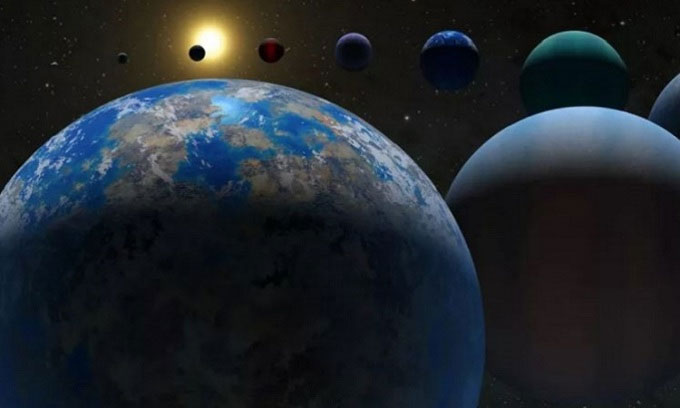The Jet Propulsion Laboratory (JPL) in Southern California announced on March 21 the addition of the 5,000th exoplanet to NASA’s database.
More than 5,000 discovered planets include small rocky planets similar to Earth, giant gas planets many times larger than Jupiter, and a group of “hot Jupiters” that orbit closely to their host stars, according to JPL. Additionally, this includes super-Earths, larger rocky planets than Earth, and “mini-Neptunes,” which are smaller versions of Neptune in our Solar System. Finally, the list also comprises planets that orbit two stars simultaneously and planets that orbit the remnants of dead stars.

The first exoplanets were discovered in the early 1990s.
NASA’s exoplanet database is housed at the California Institute of Technology (Caltech). To be included in the list, a planet must be independently confirmed by two different methods, and the discovery must be published in a peer-reviewed journal.
The first exoplanets were discovered in the early 1990s. While ground-based and space telescopes have been very effective in compiling this list, Jessie Christiansen, the lead scientist in NASA’s Exoplanet Archive project, emphasized that most exoplanets are located within a bubble surrounding our Solar System.
“4,900 out of the 5,000 exoplanets are within a few thousand light-years of us. If you extrapolate from the bubble surrounding the system, there could be many more planets we have yet to find, with numbers potentially reaching 100 to 200 billion,” Christiansen shared.
The first confirmed exoplanet discovery occurred in 1992 when astronomers Alex Wolszczan and Dale Frail published a paper in the journal Nature. They observed two exoplanets orbiting a pulsar (a very dense, rapidly spinning star) by detecting slight changes in the timing of pulses as light traveled to Earth. In 1995, researchers discovered the first planet orbiting a sun-like star. This planet was not suitable for life as it was a super-hot gas giant, orbiting its host star in just 4 days.
Astronomers detect exoplanets by monitoring the wobble of the host star caused by the gravitational pull of the planet. Larger planets are easier to detect due to their greater gravitational influence. To find more Earth-sized planets, researchers need to employ the transit method. This method assesses the light of the star and looks for small fluctuations when a planet moves in front of it.
Since its launch into space in 2009 and fuel depletion in 2018, NASA’s Hubble Space Telescope has discovered over 2,700 planets, providing vast amounts of data for scientists.


















































